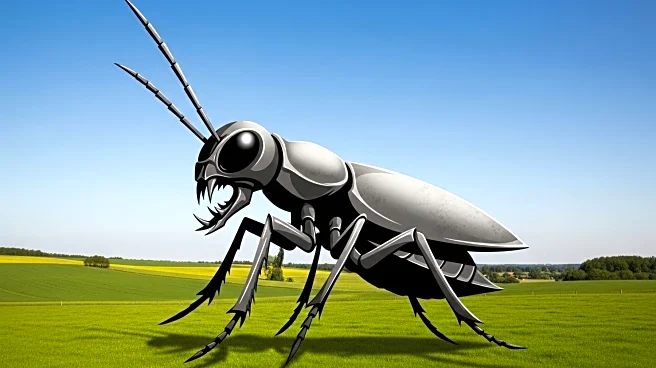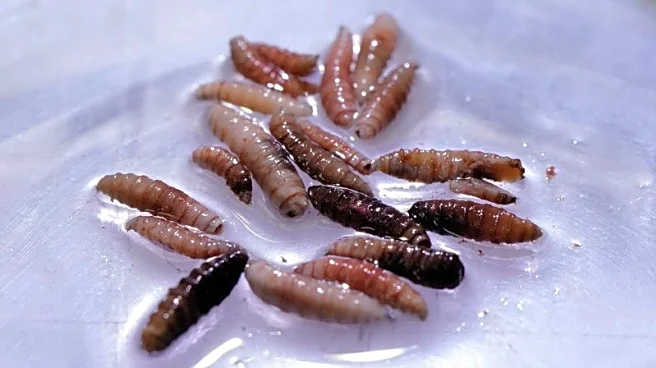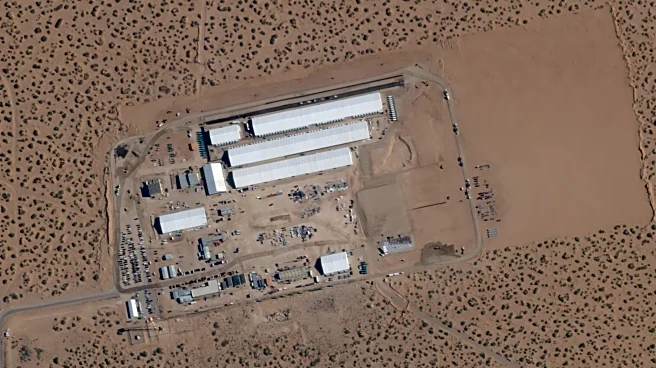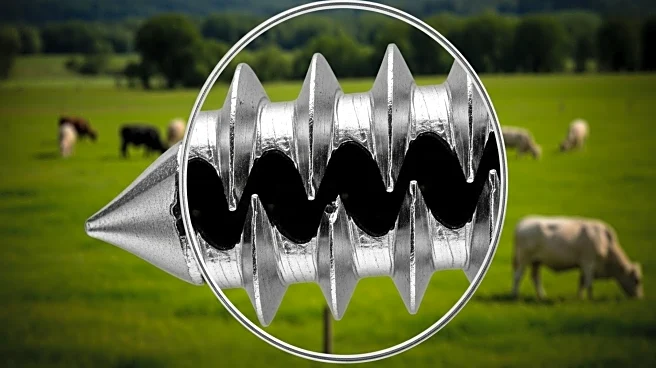What's Happening?
Mexico has reported a 53% increase in flesh-eating screwworm cases in animals since July, with 5,086 cases recorded as of August 17. The majority of cases are found in cattle, but infestations have also been reported in dogs, horses, and sheep. Screwworms are parasites that can devastate cattle herds and wildlife by burrowing into living flesh. The outbreak, which began in 2023, has spread northward from Central America into Mexico, raising concerns among American ranchers about potential infestations in the U.S., particularly in Texas, the largest cattle-producing state.
Why It's Important?
The increase in screwworm cases in Mexico poses a significant threat to the U.S. cattle industry, which could face substantial economic losses if the infestation spreads northward. Texas, as the largest cattle-producing state, could incur costs of approximately $1.8 billion due to potential screwworm infestations. The situation underscores the importance of monitoring and controlling the spread of agricultural pests to protect livestock and prevent economic disruptions. The USDA's involvement in verifying Mexico's prevention protocols highlights the need for international cooperation in addressing cross-border agricultural threats.
What's Next?
The USDA is sending a team to Mexico to ensure compliance with protocols aimed at preventing the northern spread of screwworms. This visit is crucial for assessing the effectiveness of Mexico's measures and determining any additional steps needed to protect U.S. cattle herds. The recent confirmation of a human case of travel-associated New World screwworm in the U.S. further emphasizes the urgency of addressing this issue. Stakeholders, including government agencies and the livestock industry, will need to collaborate on strategies to mitigate the risk and impact of screwworm infestations.













